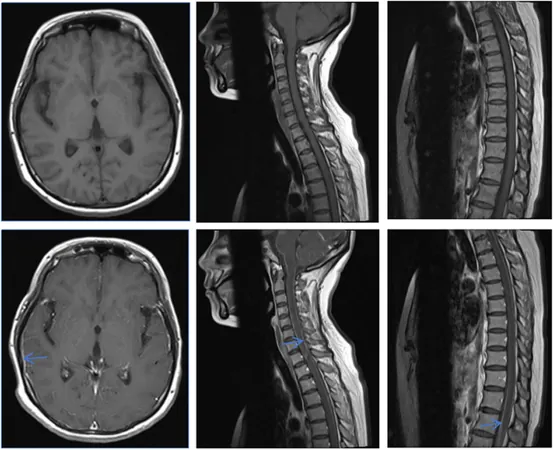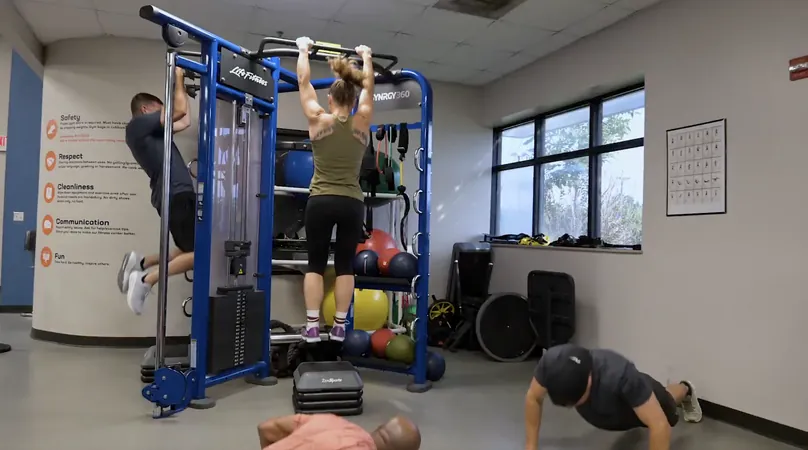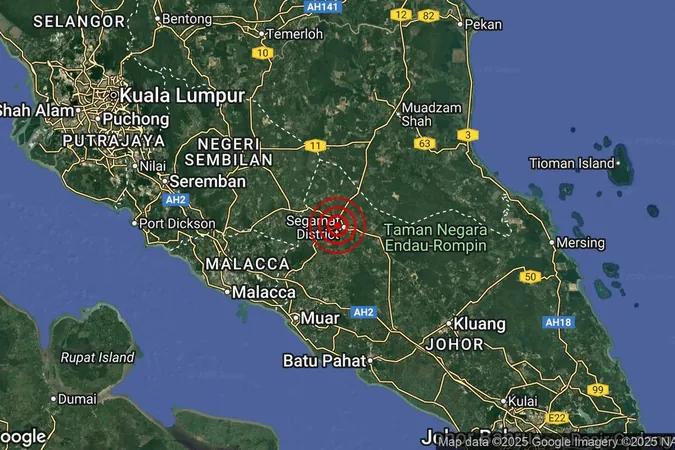
Unraveling the Mystery: A Rare Case of Dual Infection by Human Herpesvirus Type 4 and Brucella Abortus Meningitis
2025-08-25
Author: Rajesh
A Complicated Case Emerges
In an unusual medical case, a 37-year-old woman was admitted to Baotou Central Hospital on January 8, 2024, presenting a striking array of symptoms including dizziness, numbness, and limb weakness persisting for two months. Initial evaluations in a local hospital revealed no abnormalities in her head MRI, prompting treatment at a community Chinese medicine clinic, which unfortunately resulted in worsening symptoms.
Before her hospital admission, the patient had experienced increasing physical challenges, such as persistent numbness in her left arm and difficulty with fine motor tasks like using chopsticks or buttoning shirts. Accompanying these difficulties, she reported blurred vision and neck numbness. By the time of her hospital visit, she was also suffering from hearing loss and unsteady gait.
Intriguing Clinical Findings
Upon examination, her vital signs were stable, but a series of neurological assessments revealed significant abnormalities. Despite her normal mental state and essential bodily functions, she displayed issues with muscle strength and proprioception, indicating potential neurological involvement.
Diagnostic Challenges and Revelations
Following a series of laboratory tests and lumbar punctures, the results pointed to potential viral meningitis. However, traditional antiviral treatments yielded no improvement. Further testing using metagenomic next-generation sequencing (mNGS) on her cerebrospinal fluid revealed a presence of Human herpesvirus Type 4 and Brucella species, leading to a preliminary diagnosis of viral meningitis combined with neurogenic brucellosis.
Despite treatment with antibiotics and antivirals, her condition remained static. Repeated lumbar punctures revealed ongoing inflammation in her cerebrospinal fluid, highlighting the complexity of her case.
Breaking Ground on Treatment Strategy
In a desperate bid for improvement, she began a rigorous treatment regimen that included doxycycline, rifampicin, and ceftriaxone. After further consultations and adjustments to her medication, including steroids, a breakthrough finally emerged.
A Remarkable Recovery Journey
After six months of intensive treatments, patient outcomes began to reverse; her hearing improved, and the severity of her limb weakness decreased significantly. Although she requested earlier discharge from the hospital due to persistent symptoms, her resolve to improve was not deterred.
Understanding the Pathogens Involved
Human herpesvirus Type 4, or Epstein-Barr Virus (EBV), affects up to 90% of adults but rarely leads to serious neurological conditions. Of those infected, only a minute fraction develop encephalitis or viral meningitis. Meanwhile, Brucella abortus, often acquired from livestock, can also present severe neurological complications.
The Need for Future Research
This intriguing case highlights the potential for dual infections to complicate diagnosis and treatment. The unique interplay between EBV and Brucella infections warrants further study to understand how these pathogens may exacerbate neurological injuries. Enhanced diagnostic techniques and comprehensive treatment plans will pave the way for better outcomes in similar cases, emphasizing the importance of precise pathogen detection and tailored therapeutic strategies.
Conclusion: A Cautionary Tale
While this patient's journey underscores the resilience of the human body, it also serves as a reminder of the complexities involved in diagnosing and treating intricate infections. As research continues, practitioners may improve protocols for managing dual infections, ultimately leading to better patient care and recovery.




 Brasil (PT)
Brasil (PT)
 Canada (EN)
Canada (EN)
 Chile (ES)
Chile (ES)
 Česko (CS)
Česko (CS)
 대한민국 (KO)
대한민국 (KO)
 España (ES)
España (ES)
 France (FR)
France (FR)
 Hong Kong (EN)
Hong Kong (EN)
 Italia (IT)
Italia (IT)
 日本 (JA)
日本 (JA)
 Magyarország (HU)
Magyarország (HU)
 Norge (NO)
Norge (NO)
 Polska (PL)
Polska (PL)
 Schweiz (DE)
Schweiz (DE)
 Singapore (EN)
Singapore (EN)
 Sverige (SV)
Sverige (SV)
 Suomi (FI)
Suomi (FI)
 Türkiye (TR)
Türkiye (TR)
 الإمارات العربية المتحدة (AR)
الإمارات العربية المتحدة (AR)